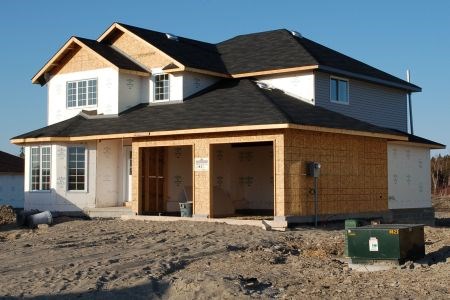The construction industry in Sudbury is expecting another active year, despite a weak first quarter in single detached starts.
“The year is shaping up reasonably well,” said Guido Mazza, director of building services and chief building official for the City of Greater Sudbury. From Jan. 1 to the end of March, building permits valued at more than $46 million have been issued compared to $17 million for the same period last year. The total building permit value in 2010 was $286 million.
Since the economic downturn in 2008, building permit values have steadily increased and the trend is expected to continue this year. New home construction accounted for 39 per cent of the permits issued last year. Residential additions, renovations and accessory buildings accounted for 36 per cent.
“It appeared that people were reinvesting in their homes,” Mazza said. “Government programs available to homeowners certainly helped.”
In 2008, Mazza noted that developers moved from single family dwellings and focused on the construction of multi-unit residences.
“Now we are seeing the trend go back to single family,” he said.
For the first three months of this year, 15 single-detached units have broken ground in the city, compared to 30 last year. In March of this year, there were only four starts.
“The first three months of the year are prime winter months and this year spring did not come early as it did in 2010,” said Warren Philp, Northern Ontario market analyst with Canada Mortgage and Housing Corp. in Thunder Bay. “Cooler temperatures and snow cover does hamper new residential construction from getting off the ground. If the numbers do look weak, we have to keep (the weather) in mind.”
Anticipated industrial and commercial development includes Vale’s plans to spend $3.4 billion in Greater Sudbury over the next five years that will see major projects such as a $2-billion plan to reduce sulphur dioxide emissions and additions to the Clarabelle mill. Further developments are expected at Silver Hills and include a residential component, but a roadway is required to connect that area to Howey Drive before construction begins.
The City of Greater Sudbury construction plans include the addition to Countryside Arena and the renovation of the former National Grocers building on Lorne Street which will be used as a new fleet and transit garage.
Denis Shank, executive director of the Sudbury Construction Association, said he expects this year to be busy for the industry.
“Despite the (Vale) strike last year, we had 15 to 20 more projects in 2010 than we did the previous year. I expect this year to be better,” Shank said.
While projects in the city are expected to keep local contractors and tradespeople employed, construction work in the region could have an impact.
“There are some large projects further north, like dams being built, that will have an effect locally and I expect there will be a labour shortage by mid-summer,” he said.
Joanne Caouette, president of the Sudbury and District Home Builders’ Association, expects a good year for her members. But, a lack of skilled labour in the city may have an impact as those such as experienced masons and licensed framers retire.
“There are not many young tradespeople to take their places,” she said. “It seems young people these days still prefer a desk job over a skilled trade so that problem is only going to get worse.”
The association is also facing other challenges such as escalating taxes and fees like the HST and development charges. Caouette said they have a severe impact on housing affordability and choice and also fuel the underground economy.
“Legitimate contractors have difficulty competing with the underground operator,” she said, “and with the implementation of the HST, the problem will increase.”
Paying cash “under the table” may help consumers avoid paying taxes and fees but they won’t have a warranty and very little recourse for poor workmanship.




